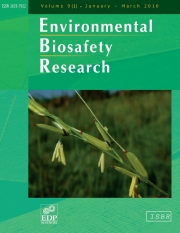Article contents
Using environmental bonds to regulate the risks of GM crops: problems and prospects
Published online by Cambridge University Press: 15 January 2003
Abstract
We examine the characteristics and limitations of the existing system of tort liability for addressing potential environmental damages from GM crops and consider whether environmental bonding could be used to address these risks. We find that in the case of GM crops, a bonding mechanism would complement some of the strengths of tort liability. Specifically, the bonding mechanism provides some protection against bankruptcy, and also shifts the burden of risk toward life science companies that develop the technology. These factors could encourage additional early research by life science firms. However, a bonding mechanism adds to the regulatory apparatus, and would likely increase administrative costs, over tort liability, for public and private parties. Nevertheless, an attractive possibility is that the cumulative outcomes of bonding, e.g., shifting the risk burden, providing a measure of bankruptcy protection, and introducing an additional regulatory component, would mitigate some of the political and social objections to the environmental release of GM crops.
- Type
- Research Article
- Information
- Copyright
- © ISBR, EDP Sciences, 2003
References
- 2
- Cited by


